Things to do in Athens
Athens is an ancient city in the truest sense, with a history stretching back into antiquity. Popular attractions such as the Acropolis, the Temple of Olympian Zeus and the Ancient Agora are among the city's dearest and most admired heirlooms, and visitors can delve even deeper into Athens' history on 'museum mile' along Vassilissis Sofias Avenue, where most of the city's museums are clustered. These include the Benaki Museum, the Museum of Cycladic Art and the Byzantine Museum. The 'mile' starts from Syntagma Square, which is home to the Greek Parliament; visitors should stick around for the daily changing of the guard.
For the best view of the city, visitors should climb Lykavittos Hill, which delivers a spectacular panorama of the Parthenon and what feels like the entire Athens. The tranquil National Gardens provide a lovely daytime break from the city bustle, and urban beaches such as Agios Kosmas, Attica Vouliagmeni, and Varkiza are only a tram-ride away.
Athens is also an excellent base for some fantastic day trips. Travellers should make a point of visiting the ancient site of Delphi, which is known for its storied oracle and breath-taking mountain views, and Corinth is a must for its ruins and the famous Corinth Canal. The picturesque coastal town of Nafplio has charming streets and historic forts; the Temple of Poseidon at Sounion offers stunning views of the Aegean.
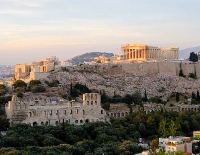
Acropolis
Perched on a steep, flat-topped rock above the sprawling city, the Acropolis is a striking image of the ancient world; a timeless collection of magnificent temples, most of which h…
Acropolis
Perched on a steep, flat-topped rock above the sprawling city, the Acropolis is a striking image of the ancient world; a timeless collection of magnificent temples, most of which honour Athena, the goddess of wisdom. The Athenian statesman, Pericles, erected most of the present-day ruins after Persians destroyed the original buildings some 2,500 years ago during their second invasion of Greece. Today, visitors enter through the Propylaea, the monumental entranceway, and the tiny, restored temple of Athena Nike is to the entrance's right.
The Parthenon may be the Acropolis' biggest drawcard. Built of Pentelic marble quarried from the distant mountains, it's the greatest surviving monument of Doric architecture, and the backdrop to a magnificent view of Athens. The Erechtheion temple sits alongside the Parthenon. According to mythology, it's the site where Poseidon and Athena contested the right to be Athens' deity. Athena won after gifting Athens the olive tree. The Acropolis' museum is located by the citadel's southern slope and displays some of the carvings and friezes recovered from the temples.
Website whc.unesco.org/en/list/404
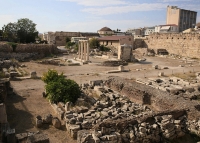
Ancient Agora
The remains of the Agora lie clustered below the Acropolis. As Ancient Athens' commercial and civic centre, it's where the great philosophers Socrates and Plato once walked and tal…
Ancient Agora
The remains of the Agora lie clustered below the Acropolis. As Ancient Athens' commercial and civic centre, it's where the great philosophers Socrates and Plato once walked and talked. In fact, the disgraced Socrates committed suicide in the Agora's southwest corner. Today, the area is littered with ancient ruins, including the Dionysos Theatre, where Classical Athens' great tragedians put on their work. Visitors can also see the restored Stoa of Attalos, which served as a law court, municipal office and shopping arcade in 200 BC. The museum on the building's ground floor contains artefacts covering 5,000 years of Athenian history.
Website www.agathe.gr/overview/the_archaeological_site.html
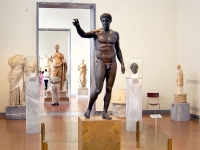
National Archaeological Museum
This is the largest and most popular of Athens' many museums, and is usually very crowded. Its vast collection includes treasures unearthed from Mycenae by German businessman and a…
National Archaeological Museum
This is the largest and most popular of Athens' many museums, and is usually very crowded. Its vast collection includes treasures unearthed from Mycenae by German businessman and an influential amateur archaeologist, Heinrich Schliemann; a staggering array of sculptures including the earliest known Greek figurines dating from around 2000 BC; frescoes from the volcanic island of Santorini; and so much more that it's recommended visitors make several visits to absorb it all. One of the most popular displays is the Mycenae gold, which was collected from ancient tombs and includes Agamemnon's death mask.
The museum is world-class and well-arranged and it hosts regular temporary exhibitions and educational programmes (lectures and workshops) for those interested. There's a gift shop and cafe for visitors to relax in if they get tired, which is often necessary as the museum can occupy visitors for hours and there isn't much seating in the exhibition rooms. Photography is allowed in the museum as the glass display cases have been designed to make photography possible. This is one of the most captivating and impressive museums in the world and it's a must on any visit to Athens.
Website www.namuseum.gr
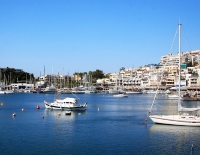
Piraeus
The port of Piraeus is the chief port in Greece, the largest passenger port in Europe, and the third largest in the world, servicing about 20 million passengers annually. Although …
Piraeus
The port of Piraeus is the chief port in Greece, the largest passenger port in Europe, and the third largest in the world, servicing about 20 million passengers annually. Although not really attractive to tourists, the confusing, bustling port of Athens is the departure point for hundreds of island ferries and cruise ships, so most tourists will pass through it while visiting Greece.
Piraeus has been Athens' port since ancient times and was for many years the chief harbour of Ancient Greece. Piraeus was a city, not merely a port, and was once separated from the mainland, occupying its own rocky island. Today it's part of Athens and the port actually consists of three harbours, with most of the tourist boats using the Zea Limani section. There are several good fish restaurants in the harbour precincts, and a sprawling street market.
Visitors with time on their hands while waiting for ferries can also explore the Maritime Museum at Akti Themistokleous, which features models of ancient and modern ships. There are also archaeological sites at the port, including the remains of some of the ancient fortifications of the harbours.
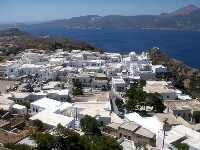
Plaka
Clustered around the northern and eastern slopes of the Acropolis, Plaka is the old historical neighbourhood of Athens, where travellers will find wonderful vestiges of the past su…
Plaka
Clustered around the northern and eastern slopes of the Acropolis, Plaka is the old historical neighbourhood of Athens, where travellers will find wonderful vestiges of the past such as labyrinthine streets and neoclassical architecture. Modern Plaka has been built on top of the residential areas of the ancient town of Athens and it's known as the 'Neighbourhood of the Gods' because of its proximity to the Acropolis and its many archaeological sites.
The old town is a very popular gathering place for travellers and tourists, particularly in the warm Athens evenings. Strolling the narrow streets of the Plaka flanked by ancient monuments, Byzantine churches and mosques, stately mansions, and inviting tavernas with vine-covered courtyards makes a pleasant diversion. The Ancient Agora is a central feature of this area and the modern Plaka was built around it.
Archaeological excavations have been taking place here continuously for decades and new ruins and artefacts are still being found. No cars are allowed in Plaka, which is completely pedestrianised. There's some great shopping to be done in the area but, on busy days, travellers should beware of pick-pockets who target market places and tourists. A visit to Athens isn't complete without a long supper beneath the stars in Plaka.
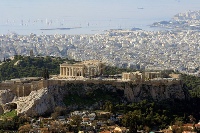
Lykavittos Hill
Lykavittos Hill juts a steep 984 feet (300m) right up from the centre of the city of Athens, and is a great vantage point from which to take in the scope of the city and its beauti…
Lykavittos Hill
Lykavittos Hill juts a steep 984 feet (300m) right up from the centre of the city of Athens, and is a great vantage point from which to take in the scope of the city and its beautiful views. In fact, this is the best spot from which to view the city in every direction, and a dreamy place to explore and take photographs.
It's said that wolves once inhabited the hill, which explains how it got its name as 'lykos' means wolf in Greek. Another popular myth explains that the hill was formed when Athena, the patron of Athens, dropped a rock she was planning to use for the Acropolis.
The St. George Chapel and Lykavittos Theatre perch atop the hill, which can be reached by car, cable car or a healthy hike. There's a restaurant and cafe on the summit to refresh exhausted hikers or provide a romantic location for a dinner. The cable car departs every 30 minutes from the corners of Aristippou and Ploutarchou Streets in Kolonaki.
Those who plan to walk up, which is a really wonderful way to experience the hill, should begin their hike on Ploutarchou Street. After walking about half way up the hill hikers will come upon some steps that will take them the rest of the way to the top.
Website www.athensinfoguide.com/wtslykavittos.htm
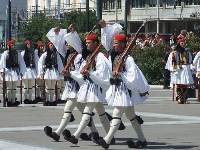
Syntagma Square
Syntagma Square, or Constitution Square in English, is named for the Constitution that King Otto was forced to grant to the people of Greece after a popular military uprising in Se…
Syntagma Square
Syntagma Square, or Constitution Square in English, is named for the Constitution that King Otto was forced to grant to the people of Greece after a popular military uprising in September 1843. The square forms the heart of modern Athens and is home to the Parliament Building, built in 1840 as a royal palace.
Tourists flock to photograph the unusually clad guards at the palace; the skirted and pom-pommed guard is changed ceremonially, every hour, in front of the memorial to the Unknown Soldier. There are two green areas planted with lots of trees in the north and south of the square that provide some welcome coolness on hot days.
The National Gardens are around the Parliament Building and they are a delight in the heat. The square is a central point of access to all the major attractions of Athens, particularly 'museum mile' along Vassilissis Sophias Avenue, which runs from Syntagma Square. Most of Athens' museums are clustered here, including the Benaki Museum, Museum of Cycladic Art and the Byzantine Museum. Syntagma Square is also a transport hub with a metro station.
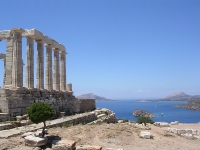
Cape Sounion
Locals and visitors love Cape Sounion. Around 43 miles (69km) east of Athens, the popular seaside resort is famous in Greek Mythology. Its best-known feature is the 5th-century BC …
Cape Sounion
Locals and visitors love Cape Sounion. Around 43 miles (69km) east of Athens, the popular seaside resort is famous in Greek Mythology. Its best-known feature is the 5th-century BC Temple of Poseidon. Perched on the cliffs above the town, it's said to be where King Aegeus waited for his son, Theseus, who'd left to slay the Minotaur of Crete. The story goes that Theseus hoisted the wrong colour sail on his return, convincing his father he'd died fighting the Minotaur. In his grief, the king threw himself from the cliffs and gave the Aegean Sea its name. Visitors can enjoy some beautiful views from the temple; the cape's coastline is worth exploring and its restaurants are good.
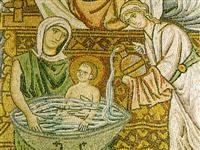
Monastery of Daphni
This great Byzantine architectural masterpiece dates from the 11th century AD and has been called the most perfect monument of that century. The monastery is situated about five an…
Monastery of Daphni
This great Byzantine architectural masterpiece dates from the 11th century AD and has been called the most perfect monument of that century. The monastery is situated about five and a half miles (9km) west of Athens on the road to Corinth, and was built on the site of an ancient Temple of Apollo. One surviving column can be seen near the entrance.
History buffs should note that church and monastery have suffered the ravages of invaders and earthquakes through the centuries. During the Crusades, Cistercian monks turned Daphni into a Catholic monastery, but today it has been reclaimed by the Greek Orthodox Church and its beautiful mosaic work depicting Biblical scenes has been restored.
The monastery's eventful history includes it being officially deconsecrated during the War of Independence and used as a barracks, and even as a lunatic asylum. It was declared a UNESCO World Heritage Site in 1990.
Website www.gtp.gr/TDirectoryDetails.asp?ID=14829
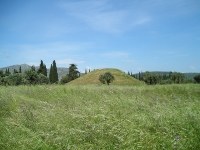
Marathon
The site of the great battle between the small force of Athenians and the mighty Persian army in 490 BC lies about 26 miles (42km) northeast of Athens, between the villages of Nea …
Marathon
The site of the great battle between the small force of Athenians and the mighty Persian army in 490 BC lies about 26 miles (42km) northeast of Athens, between the villages of Nea Makri and Marathona. Today, travellers can visit the plain of Marathon and view the burial mound of the 192 Athenians who fell in the fight, along with a small museum displaying archaeological relics from the battlefield.
The battle is famed not only for the Athenian victory against huge odds, but also for the fleetness of the Athenian runner, Pheidippides, who was dispatched to Athens with news of the victory and fell dead from exhaustion after delivering the message to the city; thus the name 'Marathon' was given to long-distance running races.
The marathon race in the 2004 Olympics started here, and followed the same route as that run by Pheidippedes in the legend, ending at the Panathinaikon Stadium in Athens, which was built for the first modern Olympic Games in 1896. Marathon remains one of the most famous battlefields in the world and a visit to the site is a must for anybody with an interest in military history.
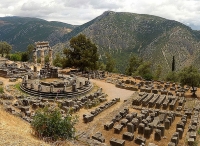
Delphi
Situated on the slopes of Mount Parnassus, Delphi was home to Classical Greece's most important oracle. The country's ancient people visited the site to worship the god Apollo, and…
Delphi
Situated on the slopes of Mount Parnassus, Delphi was home to Classical Greece's most important oracle. The country's ancient people visited the site to worship the god Apollo, and pilgrims came from all over the Classical Greek world to seek Apollo's advice via his oracle.
The area also hosted the Pythian Games. Held every four years, they attracted famous athletes from all over Ancient Greece. They were one of the four Panhellenic games, which are considered precursors of the modern Olympics.
Today, travellers hike up the Sacred Way much as ancient pilgrims did, and marvel at the site's fantastic ruins. They include the marble Sanctuary of Apollo, the Castalian Spring and the Sanctuary of Athena. Many visit the site's excellent museum. Scenically, Delphi is spectacular and presents enviable photographic opportunities. It's ideal to stay overnight, as the site is extensive.
Website www.ancient-greece.org/archaeology/delphi-archaeology.html
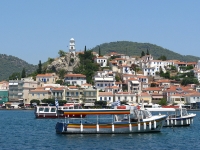
Saronic Islands
The Saronic group of islands are all within an hour or two of Piraeus by boat, making them ideal destinations for day trips from the city for those who want to experience a taste o…
Saronic Islands
The Saronic group of islands are all within an hour or two of Piraeus by boat, making them ideal destinations for day trips from the city for those who want to experience a taste of Greek island life. Alternatively, visitors can use the islands as tranquil bases on which to stay while commuting to Athens to see the sights.
Aegina is the closest island and sports a sandy beach called Agia Marina, and a quaint fishing village called Perdika. Hydra has no sandy beaches but the town is picturesque and offers good seafood restaurants. Poros can be reached from Piraeus in little more than an hour and boasts beautiful forests that descend to the beach. It offers watersports opportunities and a lively café scene, and is also a ferry hub that provides connections to all the popular Aegean islands. Spetsi has an attractive old harbour and one of the oldest wooden boat-building yards in Greece, and is renowned for its beaches and pine forests.
Piraeus port may be a little confusing or overwhelming at first but it's exciting and the boat trips to the islands are usually wonderful experiences in themselves.
Website www.greece.com/destinations/Saronic_Islands/
Benaki Museum
The Benaki is one of Greece's most famous museums, where visitors can explore Greek culture through artefacts dating from antiquity to present times. Paleolithic and Neolithic reli…
Benaki Museum
The Benaki is one of Greece's most famous museums, where visitors can explore Greek culture through artefacts dating from antiquity to present times. Paleolithic and Neolithic relics, items from the late Roman Empire, and pieces left after centuries of Frankish and Ottoman occupation are all on display. Greece's struggle for independence in 1821, and the formation of the modern Greek state feature in the more recent content. Visitors should look out for the Museum of Islamic art, temporary exhibitions, as well as restoration and conservation workshops. The museum's library holds a very valuable and extensive collection on topics relating to its exhibitions. Visitors can't borrow books, though the library is open to the public for onsite use.
Website www.benaki.gr

Attica Zoological Gardens
Attica Zoo features exotic animals such as lynxes, Angolan lions and Persian leopards, plus more than 30 bird species, and is a must for animal lovers of all ages. Striving to comb…
Attica Zoological Gardens
Attica Zoo features exotic animals such as lynxes, Angolan lions and Persian leopards, plus more than 30 bird species, and is a must for animal lovers of all ages. Striving to combine education with entertainment, the zoo takes visitors on a journey through a number of themed sections, showcasing more than 2 000 animals from 350 species. Visitors can explore a reptile house, a children's farm, a monkey jungle and other walk-through enclosures.
Website www.atticapark.com
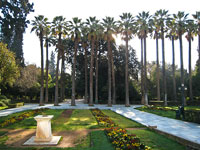
National Gardens
Picnicking with the children at the National Gardens on a Saturday has become a common pastime for local Athenian families and is a great way to spend a sunny summer's day when the…
National Gardens
Picnicking with the children at the National Gardens on a Saturday has become a common pastime for local Athenian families and is a great way to spend a sunny summer's day when the days are long. The gardens used to be called the Royal Gardens because they were the gardens of the king and the locals are very proud of this lovely green space in a city that doesn't actually have many parks.
The gardens have a collection of plants and trees from all over the world and plenty of water features that add coolness in the heat. The Gardens feature a small zoo, duck ponds, resident cats, a Botanical Museum, a playground and lots of wide-open space for children to play in. For children who love books, the gardens are also home to a Children's Library.
There are many beautiful areas to relax in the shade and get some respite from the busy city of Athens, and the gardens are also wonderful for walking or running. Locals enjoy playing games together at makeshift tables and often they don't mind if tourists want to join them. The gardens are located just behind the Greek parliament building, next to Syntagma Square, and are easy to locate.
Website www.greece-athens.com/place.php?place_id=109



